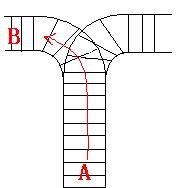热门标签
当前位置: article > 正文
Train Problem I(栈和队列)
作者:小丑西瓜9 | 2024-06-02 03:21:14
赞
踩
train problem i
声明:本文内容由网友自发贡献,不代表【wpsshop博客】立场,版权归原作者所有,本站不承担相应法律责任。如您发现有侵权的内容,请联系我们。转载请注明出处:https://www.wpsshop.cn/w/小丑西瓜9/article/detail/660845
推荐阅读
相关标签





